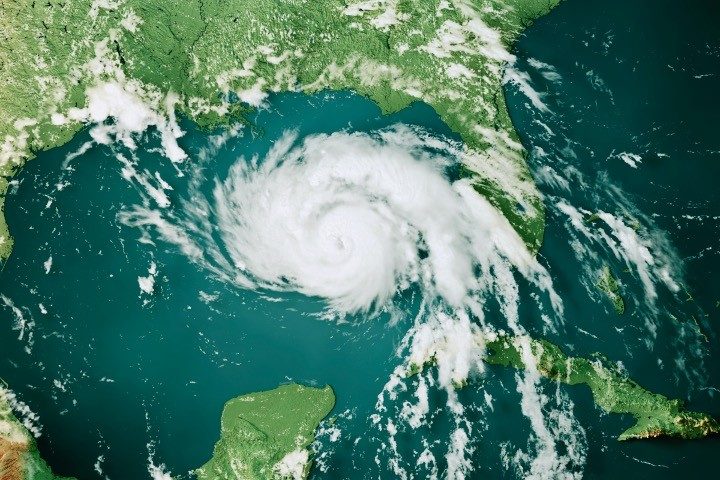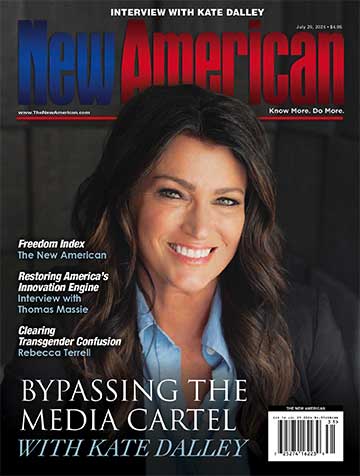
Hurricane forecasting experts have been greatly disappointed with only having three named storms for the Atlantic Basin hurricane season, and not one since July 2, as nature has proven once again to be unpredictable. This is quite embarrassing for forecasters at the National Oceanic and Atmospheric Administration’s (NOAA) Climate Prediction Center, a division of the National Weather Service, which in May had predicted above-average hurricane activity for this year.
In fact, the 2022 Atlantic hurricane season is off to its quietest start in 30 years. Adding to the experts’ doom and gloom of a quiet season is the strong possibility that this month could be just the third August since 1961, and the first since 1997, without a named storm.
Climate scientists are baffled with this season’s calm, as it follows 2021, the third-most active season (with 21 named storms), and 2020, the most active season (with 30 named storms). This is the first season in seven years that there wasn’t a named storm before the June 1 start of hurricane season. Obviously, the oft-touted “climate change” by our government that has been threatening to bring cataclysmic storms to our doorsteps is not happening.
In May, forecasters noting the unusually warm water in the Gulf of Mexico were quite worried about what they call the Loop Current, which is a current of warm tropical water looping in the Gulf. That warm water has the power to turn tropical storms into monster hurricanes. When a tropical storm passes over the Loop Current, it can explode in strength as it draws energy from the warm water. But, so far, nothing has materialized as predicted, and even a pair of western Gulf tropical disturbances failed to develop over the past two weekends.
However, with NOAA’s August report, experts are predicting that the quiet won’t last long and are warning of an above-average hurricane season. “I urge everyone to remain vigilant as we enter the peak months of hurricane season,” said Secretary of Commerce Gina Raimondo. “The experts at NOAA will continue to provide the science, data and services needed to help communities become hurricane resilient and climate-ready for the remainder of hurricane season and beyond.”
Forecasters have decreased the likelihood of an above-normal Atlantic hurricane season to 60 percent (lowered from the outlook issued in May — see chart below — which predicted a 65-percent chance), increased the likelihood of near-normal activity to 30 percent, and left at 10 percent the chances for a below-normal season.
“We’re just getting into the peak months of August through October for hurricane development, and we anticipate that more storms are on the way,” said NOAA Administrator Rick Spinrad, Ph.D. “NOAA stands ready to deliver timely and accurate forecasts and warnings to help communities prepare in advance of approaching storms.”

The main reason that this year has been a quiet start to the hurricane season is dry air, Saharan dust, and wind shear that have kept storms from developing. Saharan dust, or what the NOAA calls the Saharan Air Layer, forms over the Sahara during the late spring, summer, and early fall, and moves into the tropical Atlantic. The dust peaks between late June and mid-August, then quickly subsides after mid-August. During this peak period, Saharan dust plumes will often travel all the way to Florida and the U.S. Gulf Coast, including as far west as Texas.
Even with the current calm during August, forecasters are anticipating things will get quite active in the next few weeks. Last year, thirteen of the season’s twenty-one named storms and four of the seven hurricanes formed after Aug. 20. That included Hurricane Ida, which made a Category 4 landfall in Louisiana, eventually triggering massive flash flooding in the Northeast.
“Communities and families should prepare now for the remainder of what is still expected to be an active hurricane season,” said Ken Graham, director of the National Weather Service. “Ensure that you are ready to take action if a hurricane threatens your area by developing an evacuation plan and gathering hurricane supplies now, before a storm is bearing down on your community.”
Only time will tell if the predictions prove to be true or not. What is quite apparent is that even with today’s’ sophisticated weather tracking and prediction systems, government-supported weather forecasters still can’t predict what nature has in store for us.
Sadly, though, NOAA will still continue to spew their “greenhouse” apocalypse narrative at every opportunity to misinform a public who — one can only hope — is awakening to their junk science.




